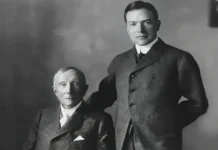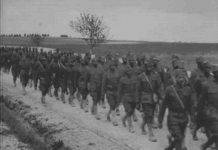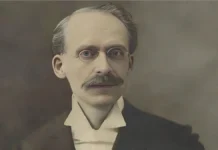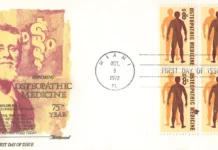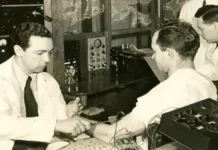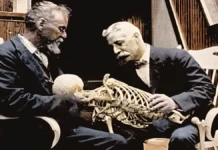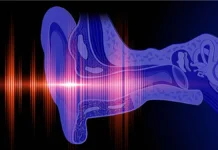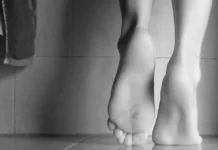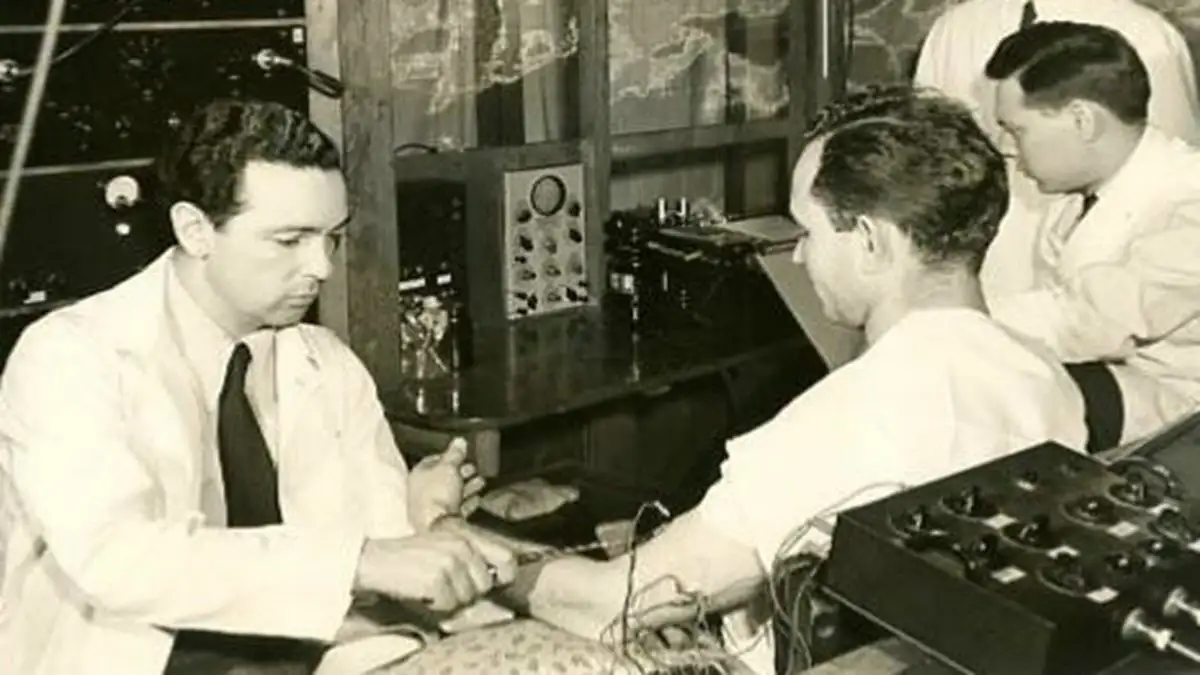The history of osteopathy is intrinsically linked to two major names: Andrew Taylor Still and his emeritus student, William Garner Sutherland. While Still laid the foundations for this alternative medical approach in the 19th century, it was Sutherland who breathed new life into the discipline through his major contributions, notably cranio-osteopathy.
The Roots of Osteopathy
The Beginnings of Andrew Taylor Still
At the heart of the osteopathic movement is the visionary figure of Andrew Taylor Still, a doctor who left his mark on the history of medicine by questioning the medical dogmas of his time. The emergence of osteopathy during the 1870s was shaped by Still’s innovative ideas, laying the foundations for an alternative medical approach that considered the human body as a whole and promoted its potential for self-regulation and healing. ‘self healing.
Andrew Taylor Still, born in 1828 in Kentucky, United States, experienced the ravages of infectious disease up close, losing many of his loved ones, including his children, to the meningitis epidemic. These personal experiences had a profound impact on Still and helped shape his belief in an approach to health that went beyond symptomatic treatments.
Over the years, Still developed the founding principles of osteopathy. One of these fundamental principles is the holistic view of the human body. Unlike conventional medical approaches that fragmented the body into distinct systems and organs, Still viewed the body as an interconnected entity. According to him, the optimal functioning of the body depends on the balance and coordination between its different parts.
Another major principle of osteopathy is the body’s intrinsic ability to self-regulate and self-heal. Still conceptualized the concept of a “vital force” which, when free to flow unhindered, allows the body to maintain balance and fight disease. Disruptions to this life force, whether due to physical trauma, emotional strain, or other factors, can compromise health and well-being.
Osteopathy also focuses on the structure of the body and its impact on function. Still observed that structural imbalances, such as muscle tension, joint restrictions or alterations in posture, can influence overall health. Osteopaths use gentle manual techniques, such as joint manipulation and soft tissue release, to restore structural balance and promote the free flow of life force.
By adopting this holistic approach, Still challenged the overuse of medications and invasive procedures, favoring a deeper understanding of the underlying mechanisms of health disorders. This perspective has helped define osteopathy as a person-centered discipline, where each individual is considered in their entirety, taking into account their medical history, lifestyle and environment.
The legacy of Andrew Taylor Still still resonates in contemporary osteopathic practice. The principles he established continue to inspire practitioners to take an empathetic and individualized approach to health, emphasizing prevention and promoting overall well-being. Osteopathy, as an alternative medical discipline, offers a unique perspective that integrates science, the art of healing, and a deep respect for the body’s inherent ability to maintain balance and heal. As such, the osteopathic movement remains an influential force in the contemporary medical landscape, carrying with it the revolutionary legacy of Andrew Taylor Still.
An Unmissable Heritage
Andrew Taylor Still’s revolutionary legacy was carefully passed on to his students, paving the way for leading figures in osteopathy. Among them, William Garner Sutherland stood out as a major pioneer, contributing significantly to the evolution of this alternative medical discipline.
The fascinating anecdote surrounding Sutherland is his insight inspired by an unusual observation. While examining the human skull, Sutherland noticed that the bones of the skull did not appear to fit together rigidly, but rather in a subtle, rhythmic movement. This observation led him to develop the theory of “cranial breathing” or “primary respiratory movement”, a key concept in cranial osteopathy.

Sutherland thus enriched Still’s legacy by providing an innovative perspective on the role of the skull in overall health. His work has helped broaden the horizons of osteopathy, integrating the concept of primary respiratory movement as an essential aspect of body regulation. Thus, Sutherland’s influence continues to be felt in the modern practice of osteopathy, adding a unique dimension to this innovative medical legacy.
William Garner Sutherland: Exceptional Student
Learning and Evolution
Born in 1873, William Garner Sutherland was immersed in the innovative legacy of Andrew Taylor Still, his mentor and founder of osteopathy. Deeply dedicated to the study of anatomy, physiology and medical philosophy, Sutherland emerged with a revolutionary vision that would redefine osteopathy: cranioosteopathy.
Sutherland insightfully observed the subtle movements of the human skull, challenging the idea that cranial bones were rigid and unchanging. His innovative understanding of the skull led him to develop the theory of “primary respiratory movement”, the foundation of cranioosteopathy. This unique approach considers the skull as a dynamic system, influencing the overall health of the body.
Sutherland Craniosteopathy has introduced a new and exciting dimension to osteopathic practice, exploring the implications of subtle movement of the skull on physical and mental health. Sutherland’s legacy remains a pillar in the field of modern osteopathy, illustrating how innovation and vision can expand medical horizons.
The Birth of Cranio-Osteopathy
The anecdote that perfectly illustrates Sutherland’s genius goes back to a seemingly innocuous observation. One day, while examining a human skull, Sutherland noticed that the skull bones were not fused together, as commonly believed, but exhibited subtle mobility. This triggered deep reflection and led to the evolution of cranioosteopathy.
The Theory and Practice of Cranio-Osteopathy
Skull Bone Mobility and Cranial Breathing
William Garner Sutherland brought an extraordinary perspective to osteopathy by developing the theory of “ primary respiratory movement ” (MRP). According to Sutherland, the bones of the skull are not static but rather undergo subtle movements in response to the circulation of cerebrospinal fluid that surrounds the brain and spinal cord. This innovative concept creates a fascinating parallel with the movement of waves in the ocean.

Imagine the skull as a calm sea, with the cranial bones being the gentle waves that move in harmony. MRP, comparable to the ebb and flow of waves, represents a rhythmic movement essential to health. Just as waves shape the beach, MRP influences the structure and function of the body. The fluidity of the cerebrospinal fluid, like the ocean rocking the waves, maintains a rhythmic coherence which promotes balance and regulation of the body.
This analogy between the MRP and the movement of waves underlines the dynamics inherent to cranio-osteopathy. Like an ever-changing ocean, the skull, according to Sutherland, is the seat of life in motion, reflecting the vitality that underpins overall health. Thus, cranioosteopathy offers a poetic vision of the human body, connecting internal rhythms to those of nature, expanding our understanding of health and healing.
Connections between the skull and the visceral system
William Garner Sutherland was a renowned American osteopath, known for his in-depth exploration of the connections between the skull and visceral system. His innovative vision led to the development of cranial therapy, a specific branch of osteopathy.
Sutherland developed the craniosacral theory, putting forward the idea that the bones of the skull are not fixed, but exhibit subtle mobility. He believed in an inherent force, called “the breath of life”, which animates the body and influences the movement of the bones of the skull. According to him, this force circulates through the cerebrospinal fluid, thus regulating various physiological functions.
One of Sutherland’s major contributions was his understanding of cranial sutures. He observed that these joints, traditionally considered immobile in adults, may actually exhibit slight mobility. This discovery opened new perspectives on understanding the interactions between the skull, the spine and the rest of the body.
Sutherland also explored the relationships between the skull and the visceral system. He believed in the importance of smooth circulation of cerebrospinal fluid for overall health. From his perspective, cranial dysfunctions can impact internal organs, thereby influencing the visceral system.
Practitioners of cranial therapy, inspired by Sutherland’s teachings, seek to restore balance to cranial movement to promote better functionality of the visceral system. They use gentle, non-invasive techniques to release restrictions and encourage the natural mobility of the skull. Taking the “breath of life” that animated the bones of the skull. This research would later be formalized in his theory of cranioosteopathy.
A Legacy That Endures
William Garner Sutherland’s legacy lies not only in his theoretical and practical contributions to osteopathy, but also in his ability to challenge established conventions. His work has broadened the horizons of the discipline and inspired many practitioners to explore new avenues to improve human health.
Sutherland left a precious legacy to osteopathy, cranio-osteopathy being today an essential component of modern osteopathic practice. His insightful observations and commitment to exploration continue to influence current generations of healthcare professionals.
References :
- Sutherland, W.G. (1939). « The Cranial Bowl. » Mankato, Minn: Free Press Co.
I hope this extended article with an anecdote meets your expectations.




